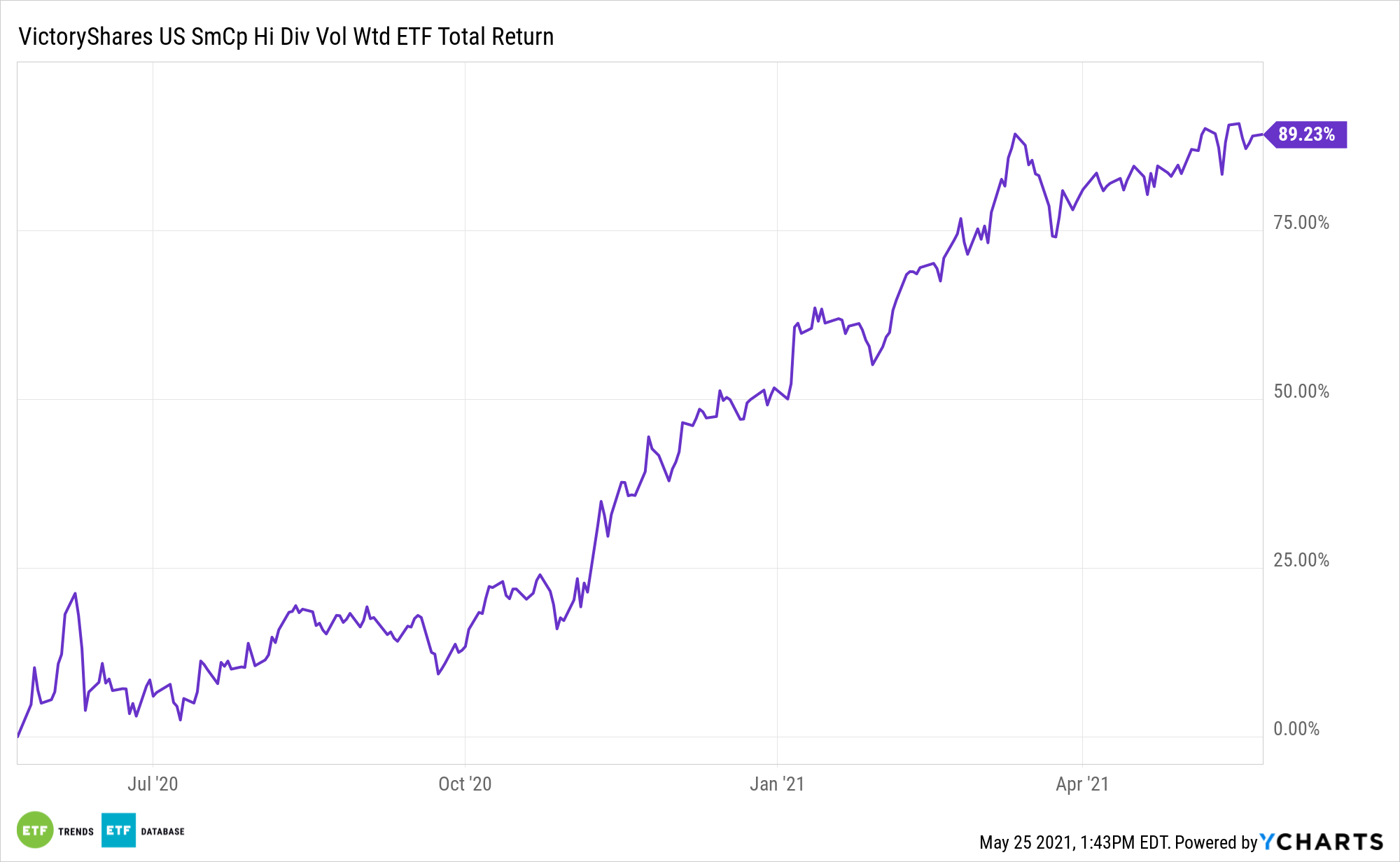While the dividend profile of small cap equities is evolving, the continued reality is that many investors don’t associate smaller stocks with dividends.
That stands to reason, as the widely followed Russell 2000 Index yields just 0.92% as of May 24. However, there are avenues for investors looking to tap into the dividend and size factors under a single umbrella. Enter the VictoryShares U.S. Small Cap High Dividend Volatility Weighted Index ETF (CSB).
The $238.58 million CSB, which will soon turn six years old, follows the Nasdaq Victory US Small Cap High Dividend 100 Volatility Weighted Index. That means that like some other VictoryShares equity-based exchange traded funds, CSB offers a fresh spin on low volatility investing.
CSB components are weighted by volatility to ensure risk is spread evenly among the 100 holdings. Although its lineup is concentrated relative to the 1,502 members of the Russell 2000 Value Index, the VictoryShares ETF has limited single stock risk as its top 10 holdings combine for just 15% of the fund’s roster.
‘CSB’ Beating the Benchmark
Beyond that, CSB stacks up favorably against the Russell 2000 Value Index. The VictoryShares ETF’s holdings have, on average, lower long-term debt/capital, price-to-book, and price-to-earnings ratios than the competing benchmark.
Importantly, CSB’s return on equity over the trailing 12 months is 10.79%, or more than five times the 2.11% on the Russell 2000 Value Index, according to issuer data. That’s relevant to investors seeking above-average payouts because return on equity is a critical gauge in measuring a company’s ability to grow dividends over time.
Of course, yield is often a selling point. CSB sports a dividend yield of 3.33%, as compared to just 1.29% on the Russell 2000 Value Index.
“Over the long term, high dividend paying stocks have been an effective return enhancer with lower volatility, versus non-dividend paying stocks. What’s more, the income stream found in high dividend paying stocks may make them attractive during turbulent times,” according to VictoryShares.
Speaking of volatility, investors aren’t giving up much by embracing CSB. Typically, low volatility funds don’t give investors full upside capture because the funds are designed to limit downside risk. However, CSB is higher by 81% over the past year, beating both the Russell 2000 and the corresponding value index. During the same period, the large cap S&P 500 Low Volatility Index is higher by 28.87%.

For more news, information, and strategy, visit the Nasdaq Portfolio Solutions Channel.
The opinions and forecasts expressed herein are solely those of Tom Lydon, and may not actually come to pass. Information on this site should not be used or construed as an offer to sell, a solicitation of an offer to buy, or a recommendation for any product.

